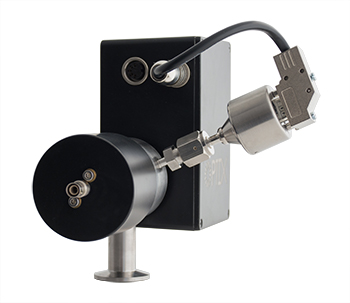Key Techniques for Gas Leak Detection
Vacuum applications tend to be extremely high spec, with certain aspects being beyond compromise. Pumps and vessels must be of high integrity, with the ability to achieve the appropriate level of vacuum without leaks. In this article, we outline some of the key ways of measuring gas leak detection.
Why is Gas Leak Detection Important
Gas leak detection in pressurized and vacuum systems is a fundamental step in the manufacturing process. Maintaining and quantifying the leak tightness of vessels during service, is rarely prioritized which can have serious consequences.
Measurement of leaks is known as the leak rate, a number which is dependent on many factors from the pressure differential to the size of the holes. This rate refers to the amount of the leak that enters or leaves the enclosure per unit of time.
Gas leak detection is an important part of producing high quality products and ensuring quality control. There are many reasons why gas leak detection is critical:
- Maintaining the pressure/vacuum
- Ensuring long-life of products
- Process efficiency
- Adherence to environmental standards
- Operator safety
- Product safety
Different Types of Leak Detection
There are many ways users may detect a gas leak in vacuum technology. Here we outline some of these ways and how they compare to Gencoa Optix.
The Pump Down Test
This gas leak detection test is conducted by evacuating a closed vacuum vessel until a specified pressure is reached and then stopping the inlet. Following a pre-determined amount of time, the valve is opened and the time it takes to return to the original level is measured.
The Bubble Test
This simple test method involves placing the instrument in water and observing whether bubbles can be seen. This test is employed for vacuums of up to 10-4 mbar.
The Pressure Rise Test
This gas detection method involves plotting the vacuum level and the time against one another. After the system is isolated, if a leak is present, the rate of rise will be faster.
Helium Leak Detection
The spraying of Helium gas around a vacuum vessel and measurement of the amount that enters the system, is the most sensitive type of leak detection and widely used.
The Optix Gas Leak Detection Instrument
Whilst the methods outlined above do have their merits, the Optix is an instrument that is both highly accurate and can be used in any vacuum environment and application. The instrument measures gas in a vacuum across a broad range of pressures; from near atmosphere down to 10-7 mbar, meaning it can cater for most vacuum processes without needing a separate pumping system.
The ability to measure any type of gas means different gases can be sprayed around the vacuum vessel to determine the leak tightness. Helium is the gas of choice due to the small size of the atoms, but it is increasing short supply and therefore expensive. Hence Argon gas can be a useful alternative as it is more readily available. But leaks can be detected in service by monitoring the nitrogen level in the chamber, which is representative of the amount of atmosphere entering the vessel. This 'natural' indicator of the integrity of the vacuum and hence the process environment can be constantly monitored by Optix.

How Does Optix Gas Leak Detection Work?
Optix employs a remote plasma spectroscopy concept that is separate from vacuum by an optical window. The concept creates a small plasma inside the sensor head which is analyzed by a built-in spectrometer. Any chemical present in the vacuum chamber will be excited in the remote plasma, and that excitation will be visible in the plasma spectrum.
Optix is extremely adaptable and is easily switched between vacuum systems. It can also be carried in a box to customer sites, offering ultra-high sensitivity leak detection when using the single gas option.
Using Optix for gas leak detection is highly beneficial because its all in one system means there is no need for a range of complex differential pumps. It offers automatic calibration and direct monitoring of the vacuum to offer instant insight into any change.
Find Out More
Contact Gencoa

To contact Gencoa at our Liverpool headquarters, click for contact details.
For details of international representatives, refer to our list of worldwide contacts.

